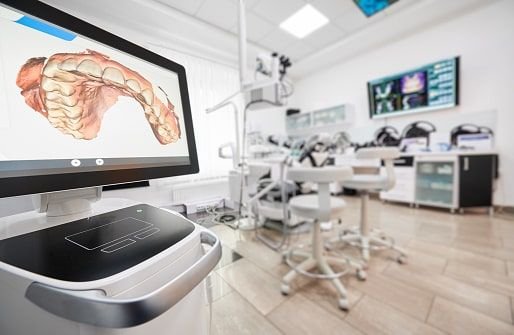Just like other fields, the medical world is no longer practicing old technology and equipment. Advanced tools and procedures are constantly being introduced. To be specific, dentistry has evolved a lot in recent years.
Digital equipment has replaced traditional practices. Dental care has evolved from simple tooth fillings, lengthy surgeries, and basic procedures to advanced practices like CAD/CAM, dental implants, lasers, and a lot more. Some of these advancements are as follows:
Digital X-ray system
Previously, people only had the option for traditional X-rays, although outside dentistry, digital X-rays were very common. But today, digital X-rays have made this segment much easier for people. It only takes minutes to generate it and has numerous benefits over the traditional ones.
It also shows cavities clearly and helps the doctor have a better view of dental implants and other procedures. It also saves the hustle of having everything documented. Both doctor and patient can store the X-ray digitally and compare it with the previous versions without having to carry big files every time.
Advanced light
An advanced form of light tool, also known as VELscope commonly, makes it possible for the dentist to find diseases like cancer and other abnormalities. This has widely helped in early diagnosis and to have a better view of what cannot be seen by the naked eye.
Dental implants
Dental implants are a metal replacement when a tooth loses its roots due to a cavity or other reasons. Implants serve as a foundation for the tooth and make it easier to chew and strengthen the jaw. Implants are not a discovery but have massively improved as compared to previous practices. The implant failure rate was very high back then. But today, with a few exceptions, we can say that most implants are carried out successfully.
Also, the average life span of dental implants has increased for up to almost fifteen years. Better X-ray systems have made it easier for professionals to figure out the exact requirement of the patient.
Lasers
The traditional mirror tool that dentists used to find cavities is now replaced by lasers. Lasers help for better detection of cavities and tooth decay without having to poke around in the patient’s mouth. Many surgical practices today are carried out using laser because it is not only fast but also less painful.
The laser beam also destroys bacteria up to some extent which is highly favorable for dentists as it avoids further infections or complications. Although the laser cannot replace X-rays because they give the external view of the tooth, they are very efficient for the early diagnosis of cavities and grooves. A diode laser uses the fluorescence level to find the anomalies.
Conclusion
Dentistry is also one of the most advanced fields of medical science that is constantly being equipped with new and advanced technologies, for better diagnosis and treatment. New procedures are less painful and more effective, making it easier to get your teeth in a good health.




